Use Knitting Yarn for Cozy Handwoven Blankets
Here at SweetGeorgia, we love using knitting yarn for weaving, especially for blankets. Knitting yarns are extra squishy and super soft; who wouldn’t want to be wrapped up in a blanket surrounded by all that coziness? But before you dive into using a sweater’s quantity (or two) to weave a blanket, let’s go over a few things to consider.
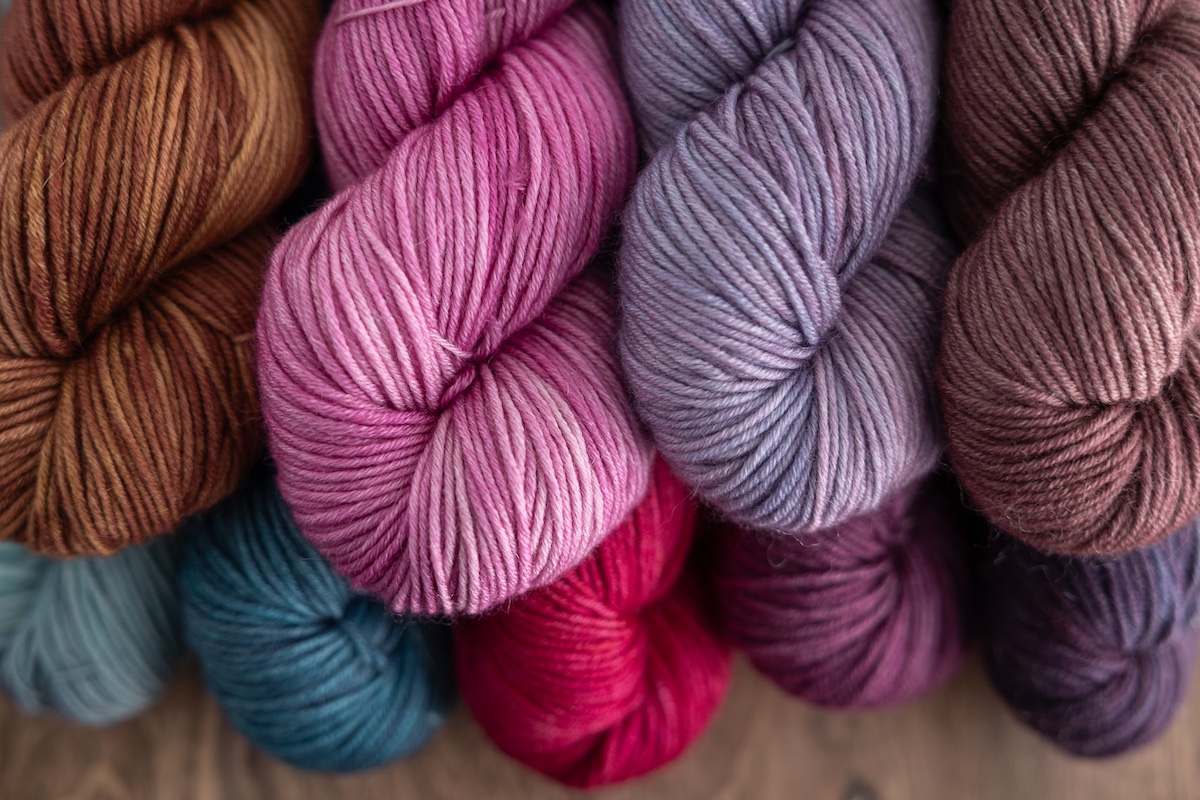
Considerations When Using Knitting Yarns
We’ve heard it time and again in books, guilds, and weaving communities: don’t use knitting yarns, only use weaving yarns designed for the loom. But why? There’s really just one main reason, let’s dive deeper into this.
Controlling Warp Tension
The number one concern is tension. Knitting yarns can be quite elastic, making it harder to maintain even tension across multiple warp threads. This can result in a warp that’s uneven, the wrong length, or a fabric that doesn’t beat smoothly.
Try this experiment: take a knitting yarn, place your hands 10 inches apart, and gently pull. You’ll likely feel a good amount of stretch. Now do the same with a wool weaving yarn. Notice the difference? That elasticity makes a difference on the loom.
This super elastic yarn can be a bit tricky to work with and may cause issues at different stages of your weaving process.
- While making your warp. Yarn held under too much tension while winding, it can stretch more than expected. This might lead to a warp that ends up too short once it relaxes.
- When winding onto the back beam. If the threads are wound on with slightly different tension, your warp may not advance evenly. This can lead to puckering or uneven beating as you weave.
- While advancing the warp with too much tension. Wool naturally wants to bounce back. The warp threads held under too much tension during weaving, you may notice the fabric changes shape once it’s off the loom.
- When advancing with uneven tension. Each time you advance the warp, if you don’t use the same amount of tension, it can result in wavy or distorted fabric once it’s off the loom.
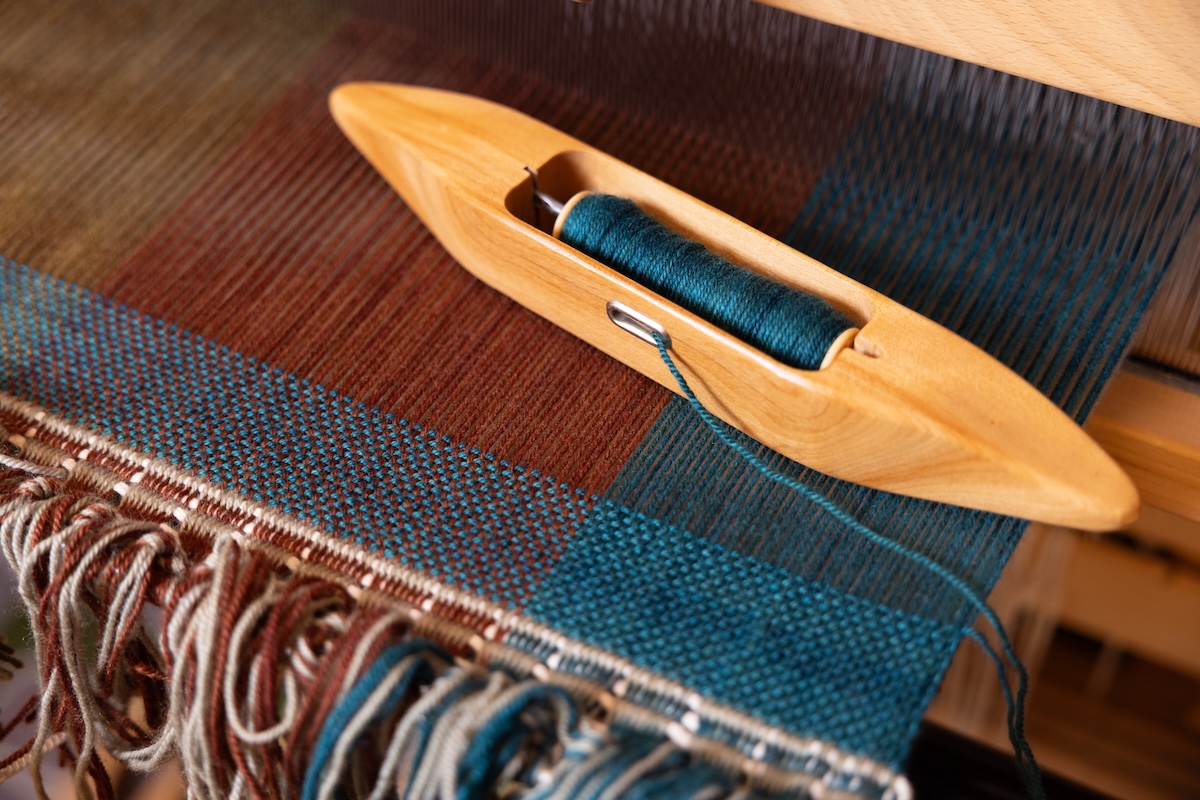
Understanding Knitting Yarns
But don’t let any of this scare you. If we understand the yarn, we can understand how to control it.
Yarn Construction
Many weaving yarns are worsted spun, while many knitting yarns are spun semi-woollen. Even if they appear smooth like worsted yarns, they’re often carded in large mills, adding a bit of loft. Katrina Stewart has a wonderful article, Worsted vs Woollen Spun Yarns: The Yarn-Making Process, explaining yarn construction that’s worth checking out if you want to learn more.
Sheep Breeds
When looking at the sheep breeds used for weaving yarns, many are often made from medium to long wool breeds that produce coarser but more durable fibres. Knitting yarns, on the other hand, tend to come from finer, softer breeds like Merino. These yarns are lovely next to the skin but can be more prone to pilling, and many still have that extra bounce or stretch. Even non-spinners find Rachel Smith’s article, The Nuances of Different Wools: Sheep Breed Classifications, fascinating. How can you use sheep characteristics to your advantage while weaving fabric?
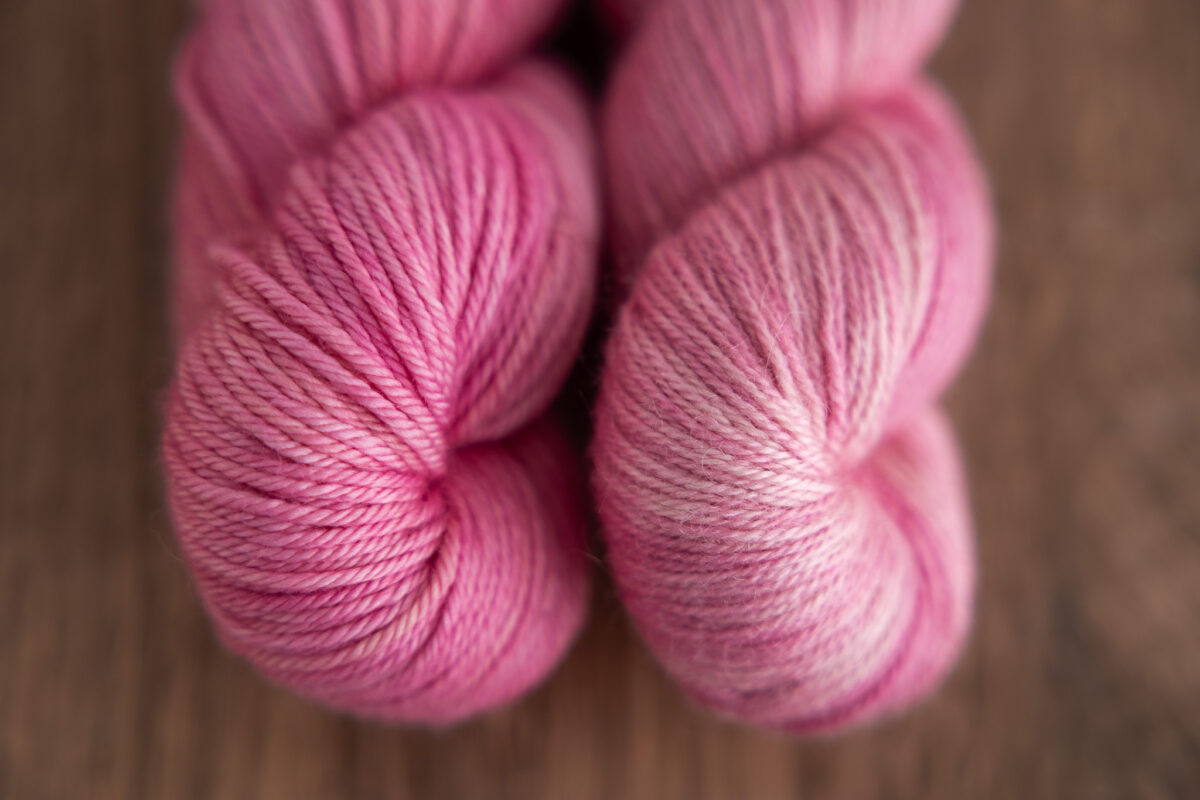
Sizing
Some weaving yarns contain machine oils or are treated with sizing, a temporary coating that helps the yarn stay stable during weaving, reducing the elasticity. Don’t worry, it all washes out easily after weaving, leaving the fabric soft again. A great example is Harrisville Yarns. On the cone, it’s left with spinning oils from the machines for weaving. In the skein, it’s meant for knitting and has been thoroughly washed. The yarn is identical, but the feel is noticeably different due to the finishing process when it leaves the mill.
Superwash Yarn
Superwash yarns show up a lot in knitting, and while they’re an advantage in many ways, they can be a disadvantage if you’re hoping for a felted or slightly fulled finish. These yarns won’t felt. They can also be a little slick, so you might consider setting them slightly denser. For example, if you’d usually weave a DK yarn at 10 epi for twill, you might try 11 epi. But as always, sample!
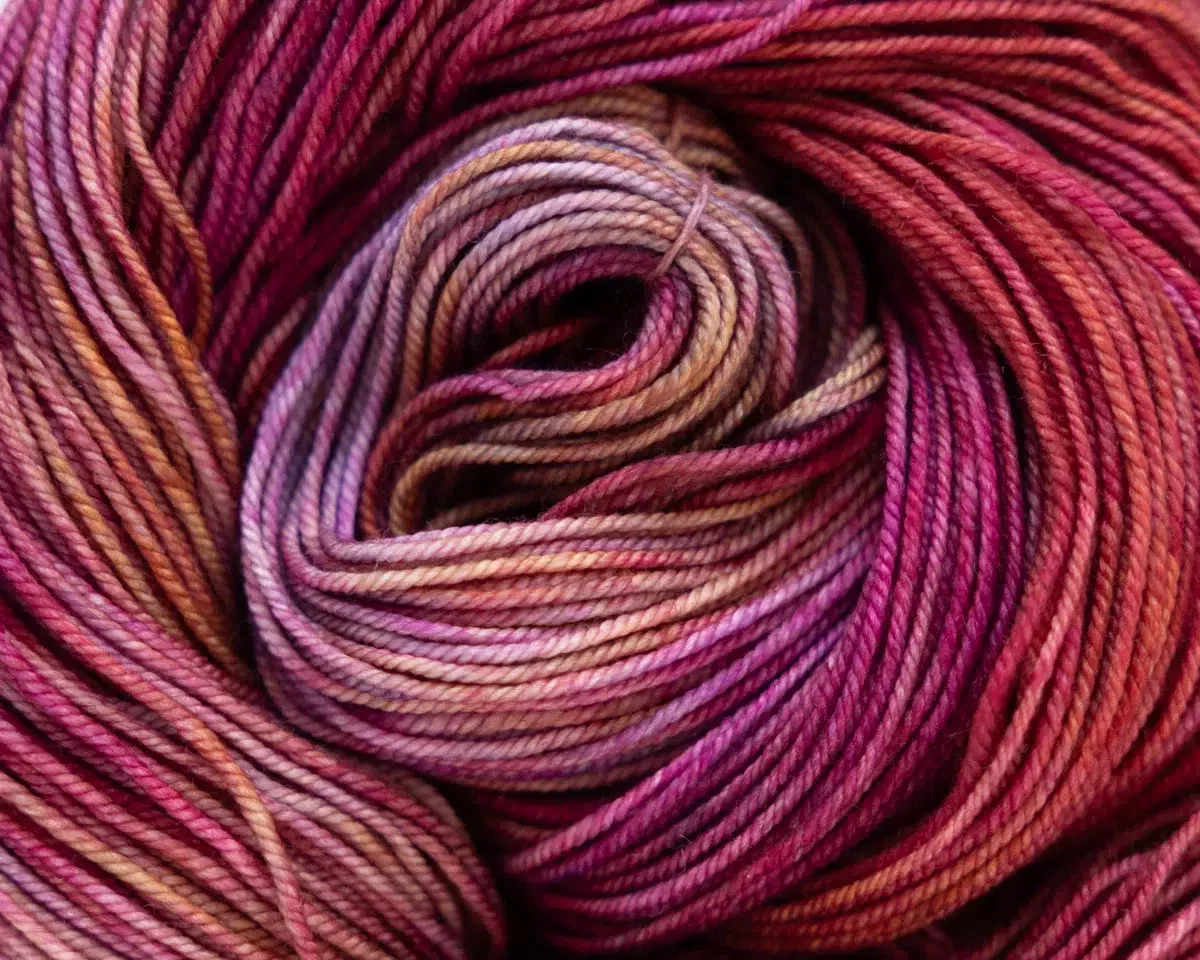
Why We Love Using Knitting Yarns
There are so many good reasons to use knitting yarns that we might miss a few, but we’ll do our best.
Superwash Yarns
It is worth mentioning superwash yarns again because they have a huge advantage: superwash yarns are super easy to care for and were designed to be machine-washed and dried. While we recommend soaking your hand-dyed yarn projects and laying them flat to dry, there is flexibility here. These yarns make fantastic gifts because you don’t have to worry that the recipient will ruin them with one wash. That kind of peace of mind helps everyone enjoy the handwoven gift more.
Soft Yarns
Remember the sheep breeds? Most knitting yarns come from breeds that people love to wear next to their skin! That means weaving with these yarns gives you ultra-soft blankets that feel amazing to wrap up in. Wools like Bluefaced Leicester (as found in our SweetGeorgia BFL+Silk DK) offer a nice balance of softness and strength, without as much pilling. Or go ultra-soft with the SweetGeorgia Superwash DK, which is 100% Superwash Merino!
Felicia recently released a blanket design for WEFT magazine called the Minimalist Blanket. It uses 11 skeins of SweetGeorgia BFL+Silk DK, woven in double weave. You can play with any colour combination. The squish factor was so good, she started making another blanket right away as a personal blanket for home.
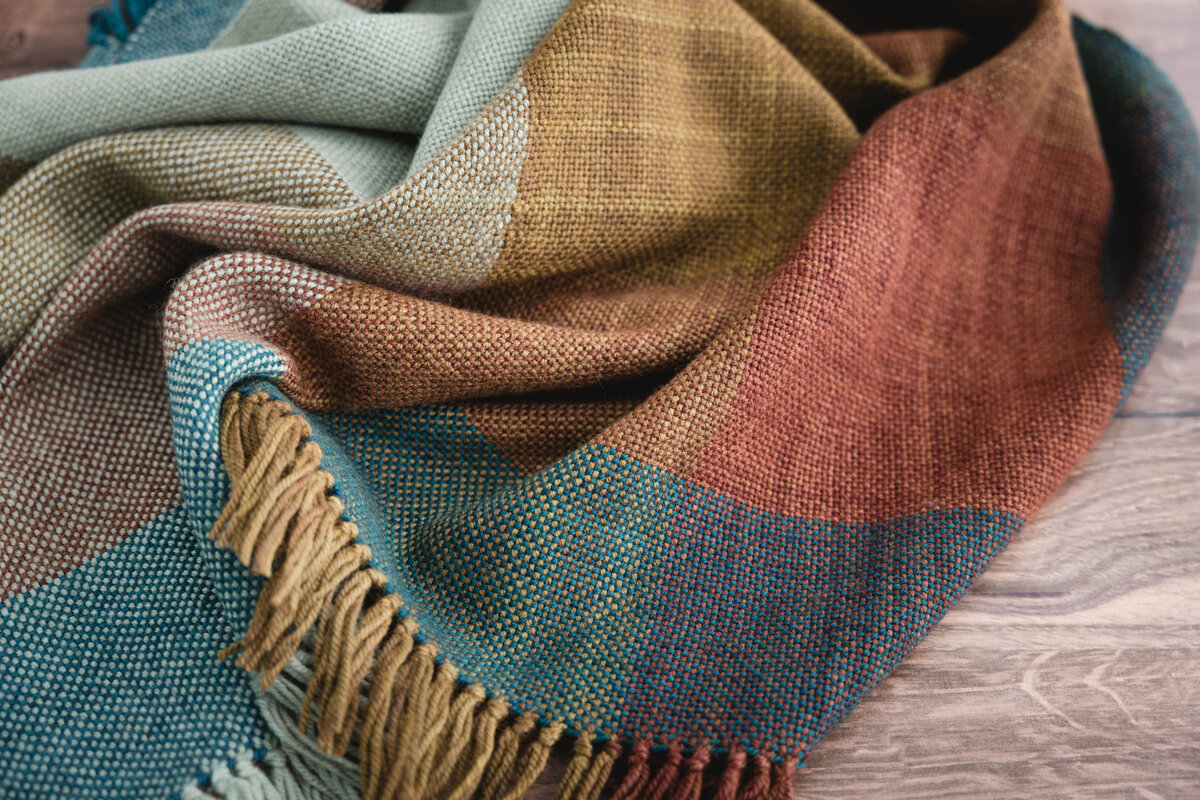
Easy to Find
Knitting yarn is everywhere. While weaving yarns are mostly available online or in specialty shops, you can often pick up knitting yarn at your local yarn store or even the grocery store. It is everywhere! That’s especially helpful for last-minute gifts or if you need to quickly swap out a colour after sampling.
Unique, Hand-Dyed Options
Knitting yarns offer a stunning range of hand-dyed options and can be found at fibre festivals, local yarn stores, Etsy, craft shows, and more. Tonals, speckles, gradients, variegated skeins, so many possibilities that are rarely found in commercially dyed weaving yarns. These yarns make your finished projects pop and often draw the attention of both non-weavers and fellow fibre lovers alike.
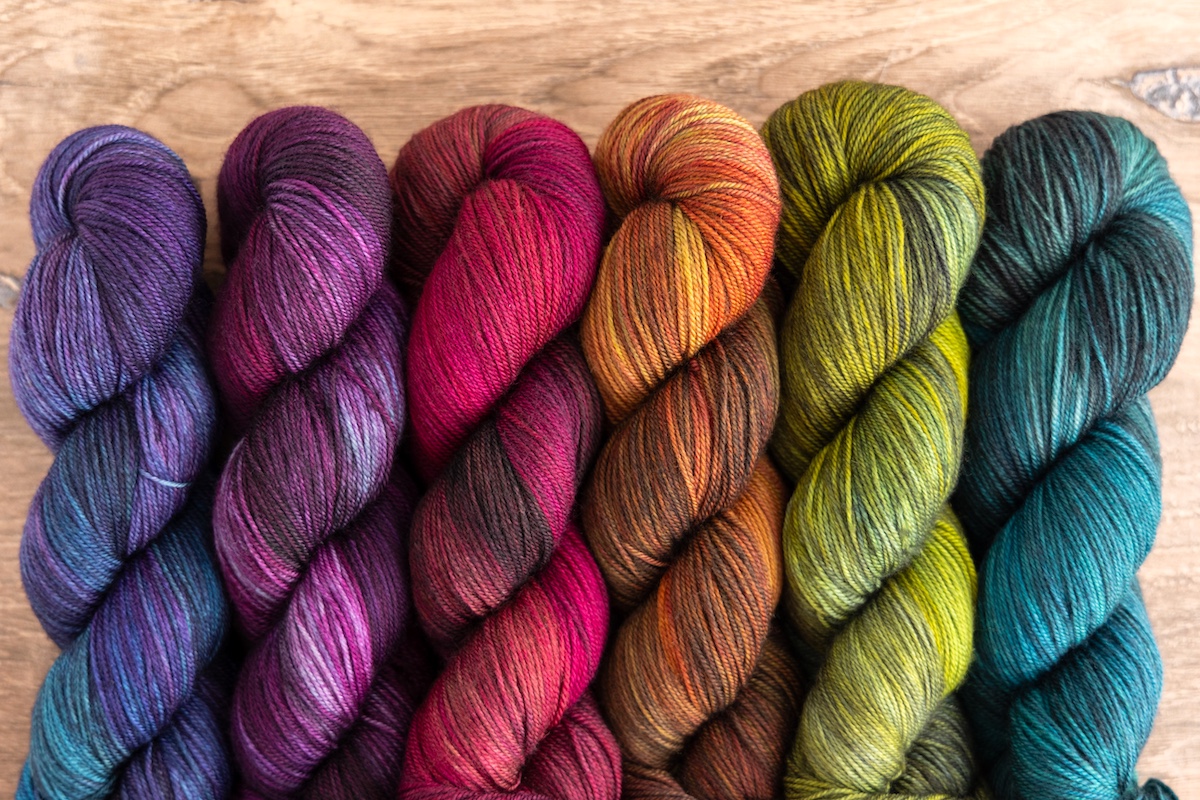
Thicker Yarns = Faster Weaving
Knitting yarns tend to be thicker than most weaving yarns, which means fewer ends to thread through heddles, fewer picks while weaving, and faster projects overall. Plus, thicker knitting yarns mean thicker fabric, which is perfect for warm, cozy, and squishy blankets.
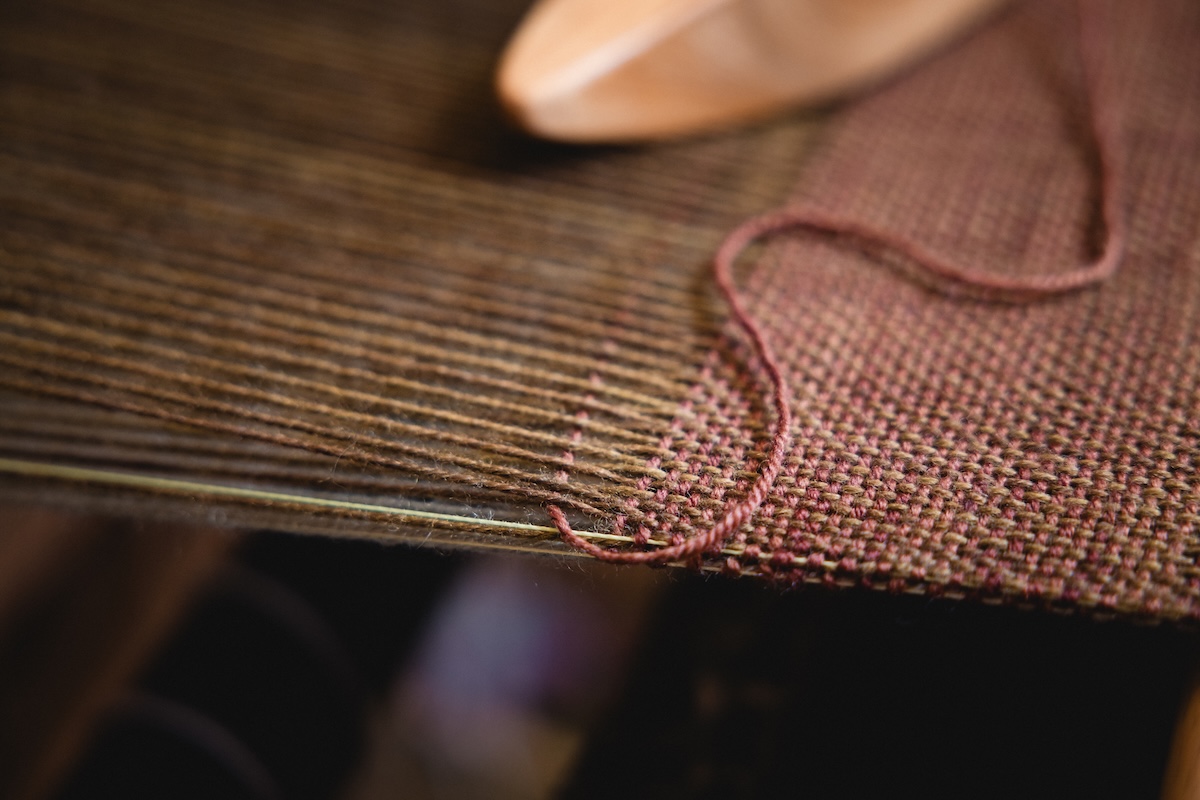
Final Thoughts
Just like some weavers find linen or silk tricky at first, knitting yarns get easier to work with over time. Once you’ve tried it a few times, you’ll learn to manage the tension and make adjustments as needed. With practice, it becomes second nature.
There are so many reasons to consider knitting yarns for weaving, especially for larger, cozy projects like blankets. They are soft, squishy, quick to weave, easy to care for, and full of creative possibilities when using hand-dyed skeins. With a bit of practice and a few samples, you’ll be weaving with knitting yarn in no time, and loving it.
The post Use Knitting Yarn for Cozy Handwoven Blankets appeared first on SweetGeorgia Yarns.
Comments
Post a Comment